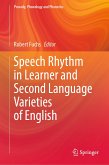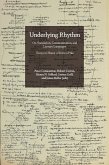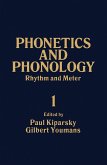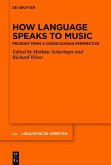This monograph reconsiders the question of speech isochrony, the regular recurrence of (stressed) syllables in time, from an empirical point of view. It proposes a methodology for discovering isochrony auditorily in speech and for verifying it instrumentally in the acoustic laboratory. In a small-scale study of an English conversational extract, the gestalt-like rhythmic structures which isochrony creates are shown to have a hierarchical organization. Then in a large-scale study of a corpus of British and American radio phone-in programs and family table conversations, the function of speech rhythm at turn transitions is investigated. It is argued that speech rhythm serves as a metric for the timing of turn transitions in casual English conversation. The articular rhythmic configuration of a transition can be said to contextualize the next turn as, generally speaking, affiliative or disaffiliative with the prior turn. The empirical investigation suggests that speech rhythm patterns at turn transitions in everyday English conversation are not random occurrences or the result of a social-psychological adaptation process but are contextualization cues which figure systematically in the creation and interpretation of linguistic meaning in communication.
Dieser Download kann aus rechtlichen Gründen nur mit Rechnungsadresse in A, B, BG, CY, CZ, D, DK, EW, E, FIN, F, GR, HR, H, IRL, I, LT, L, LR, M, NL, PL, P, R, S, SLO, SK ausgeliefert werden.









